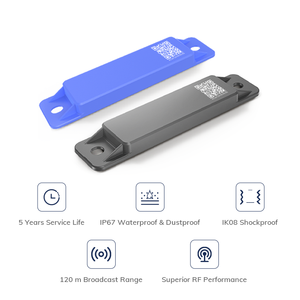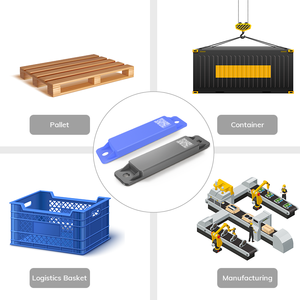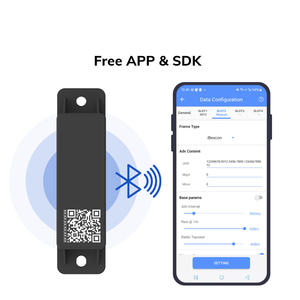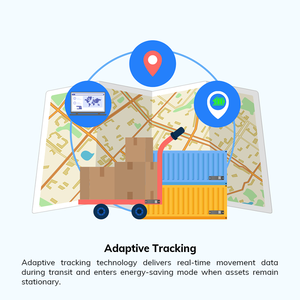
All categories
Featured selections
Trade Assurance
Buyer Central
Help Center
Get the app
Become a supplier

(920 products available)




















































AVLS vehicle tracker technology has improved car tracking technology, making it easier for people to get real-time information about their vehicles. AVLS vehicle trackers come in different types, depending on the needs of the customers. Here are some common types of AVLS vehicle trackers.
AVLS specifications differ based on the technology used. Various technologies have distinct features that serve different tracking purposes. Here are some common AVLS vehicle tracker specifications:
GPS Technology
GPS technology provides real-time tracking with accurate location information. This technology has a tracking accuracy of about 5 to 10 meters. The data it tracks is transmitted every 10 seconds to provide continuous monitoring of the vehicle's location. GPS technology allows the tracking device to update its location every 10 seconds and is ideal for logistics and fleet management. Additionally, GPS technology allows users to set a geo-fence for alerts in case of vehicle unauthorized movement.
Cellular Technology
Cellular technology utilizes 2G, 3G, or 4G networks to transmit tracking data. This technology enables the vehicle tracker to communicate with the centralized control system, allowing for real-time monitoring and control. Cellular technology is ideal for urban areas with good cellular coverage. However, it has limited coverage in rural areas.
Satellite Technology
Satellite technology provides vehicle tracking in remote and rural areas. This technology uses satellites to communicate between the tracking device and the control center. Satellite technology has global coverage, making it suitable for remote location tracking.
RFID Technology
AVLS also utilizes RFID technology for vehicle tracking. RFID technology is suitable for short-range tracking and has limited applications. This technology is used for asset tracking and inventory management.
Power Supply
AVLS tracking devices have different power supply options. For instance, GPS tracking devices have an internal battery that is rechargeable. The battery capacity and life differ based on the model of the tracking device. Some tracking devices can last for several days when fully charged. Others have a battery life of up to 48 hours. That is because the tracking devices use different power consumption technologies, such as low-power or high-power technologies.
Data Storage
AVLS vehicle trackers have internal memory for storing tracking data. Some trackers also have external memory slots for additional data storage. The internal memory of the tracking device varies and can range up to 32 GB. AVLS tracking devices use different data storage technologies, such as flash memory and EEPROM.
Environmental Resistance
AVLS vehicle trackers are designed for various environmental conditions. These trackers differ in environmental resistance based on the humidity, temperature, dust, and waterproofing. Some trackers can operate in extreme temperatures ranging from -40 to 85 degrees Celsius. They also have high IP ratings for dust and waterproofing.
AVLS vehicle tracking devices require regular maintenance to function properly and accurately. Here are some maintenance tips:
Before buying an AVLS vehicle tracker, it is important to consider the following factors:
Coverage area
When choosing an AVLS vehicle tracker, the first thing to consider is the coverage area. The tracking device chosen should give tracking service in the area where the vehicle moves. If the vehicle moves in a large city, the tracker should give accurate information in a large city. If the vehicle moves in a remote location, the tracker should give accurate information in a remote location.
Size and design
When choosing an AVLS vehicle tracker, the second thing to consider is the size and design. The vehicle tracker should be small and not be seen. If the tracker can be seen, it will be removed by the thief before the vehicle is tracked. The AVLS vehicle tracker should have different designs so that it can fit in different vehicles.
Battery life
When choosing an AVLS vehicle tracker, the third thing to consider is battery life. The tracker should have a long-life battery. This will reduce the frequency of changing or charging the battery. The vehicle tracker chosen should have a fast charging time.
Ease of use
When choosing an AVLS vehicle tracker, the fourth thing to consider is ease of use. The AVLS vehicle tracker chosen should have an easy-to-use interface. This will make it easy for the user to track the vehicle. The features of the AVLS vehicle tracker chosen should make it easy for the user to track the vehicle in real time.
Data security
When choosing an AVLS vehicle tracker, the fifth thing to consider is data security. The tracker should protect the user's data. This will prevent hackers from accessing the tracking information.
Alert and notification
When choosing an AVLS vehicle tracker, the sixth thing to consider is alerts and notifications. The tracker should notify the user when there is unauthorized movement or when the vehicle speed exceeds the set limit.
Additional features
When choosing an AVLS vehicle tracker, the seventh thing to consider is additional features. The tracker should have additional features like a geofence, which will notify the user when the vehicle enters a restricted area. The tracker can also have an emergency button that can be pressed when there is an emergency.
Most AVLS vehicle trackers are DIY-friendly. Installation is quick and easy, with a step-by-step guide provided by the manufacturer. Here are some general guidelines for installing AVLS vehicle trackers:
Some AVLS vehicle trackers may use a USB cable for power. In such cases, keeping the device charged during use is important. Some also have indicator lights that blink to show they are working.
For replacing AVLS vehicle trackers, users should follow the same installation steps. Remove the tracker from its previous location, clean the area, and install the new tracker following the steps above.
Q1: Can the AVLS vehicle tracker be used for tracking motorbikes?
A1: Yes, the AVLS vehicle tracker can track motorbikes. It is designed to track a wide range of vehicles, including motorbikes. The tracking device can be installed on the motorbike to provide real-time tracking and location information.
Q2: Does the AVLS vehicle tracker offer live tracking?
A2: Yes, the AVLS vehicle tracker offers live tracking. Users can access the live tracking information through a web interface or a mobile app, allowing them to see the vehicle's location in real-time.
Q3: Is the AVLS vehicle tracker waterproof?
A3: Some AVLS vehicle trackers are designed to be waterproof or water-resistant. This feature protects the device from damage due to exposure to water or harsh weather conditions. Checking the specifications and features of the particular AVLS vehicle tracker to see if it is waterproof or water-resistant is important.
Q4: Can the AVLS vehicle tracker be used for tracking heavy-duty trucks?
A4: Yes, the AVLS vehicle tracker can track heavy-duty trucks. It is designed to track various vehicles, including heavy-duty trucks. The tracking device can be installed on the truck to provide real-time tracking and location information.
Q5: Does the AVLS vehicle tracker have a geofence feature?
A5: Yes, the AVLS vehicle tracker has a geofence feature. The geofence feature allows users to set virtual boundaries on a map. Users receive alerts or notifications if the tracked vehicle enters or exits the defined area.